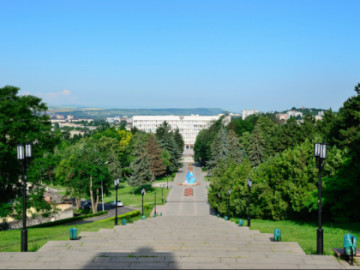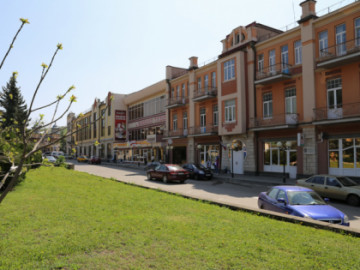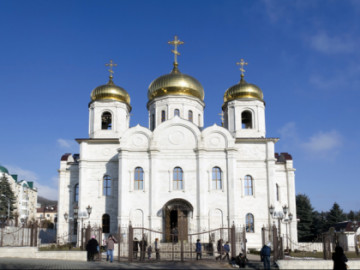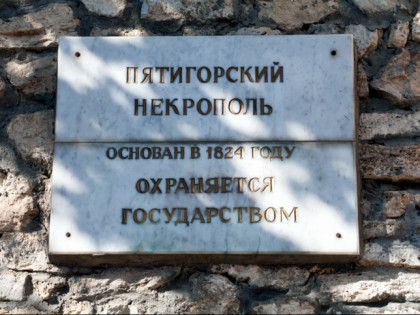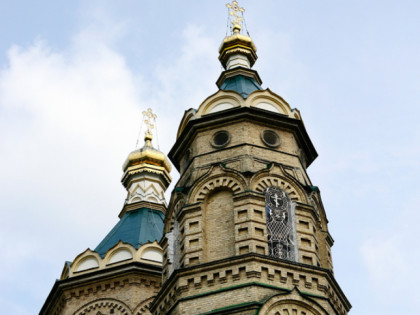Pyatigorsk Necropolis and Church of the Holy Righteous Lazarus
The history of Pyatigorsk has frozen in the tombs of the necropolis — the most prestigious urban cemetery and open-air museum. The Church of the Holy Righteous Lazarus of a yellow brick stands on a high white basement at the entrance to the cemetery. The church was built in the middle of the XIX century, but it did not last long. Because of the cracks in the walls it was dismantled and moved to another place. An unusually beautiful new Lazarus Church with a two-tier bell tower and a steepled dome opened in 1902. This is the only church in Pyatigorsk that did not close in the Soviet era.
The place for the necropolis in Pyatigorsk was chosen in 1824 by the commander of the Caucasian troops General von Stahl. His sarcophagus is on the main alley. One can see Orthodox, Catholic, Lutheran, Armenian and Greek burials in the necropolis. Here the Russian poet M. Lermontov was also buried, but in 1842 his remains were reburied in a family estate near Penza, and a monument was erected on the site of his grave in Pyatigorsk. From it a path goes to the monument to the architects Bernardazzi brothers, who largely determined the appearance of Pyatigorsk.





















